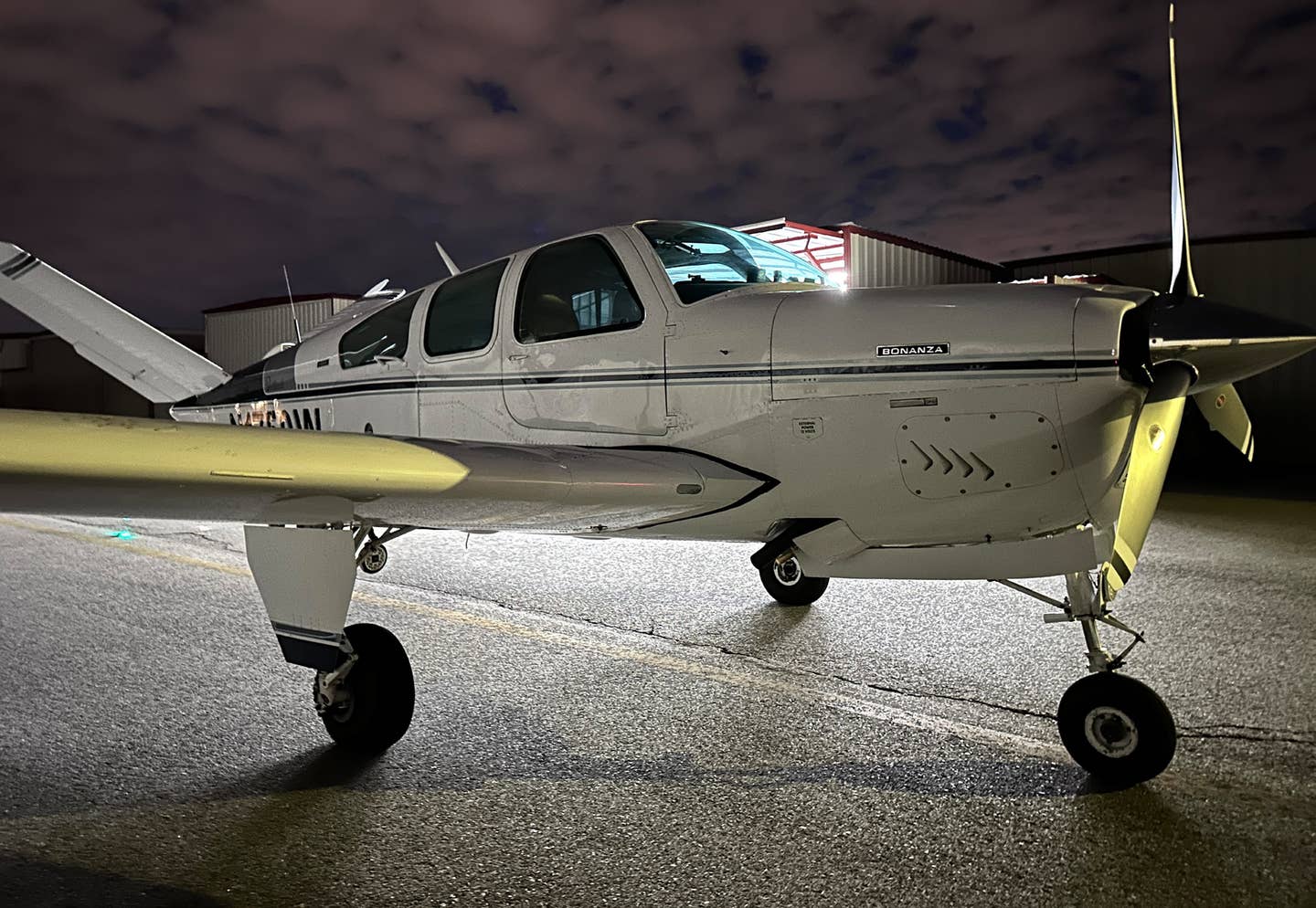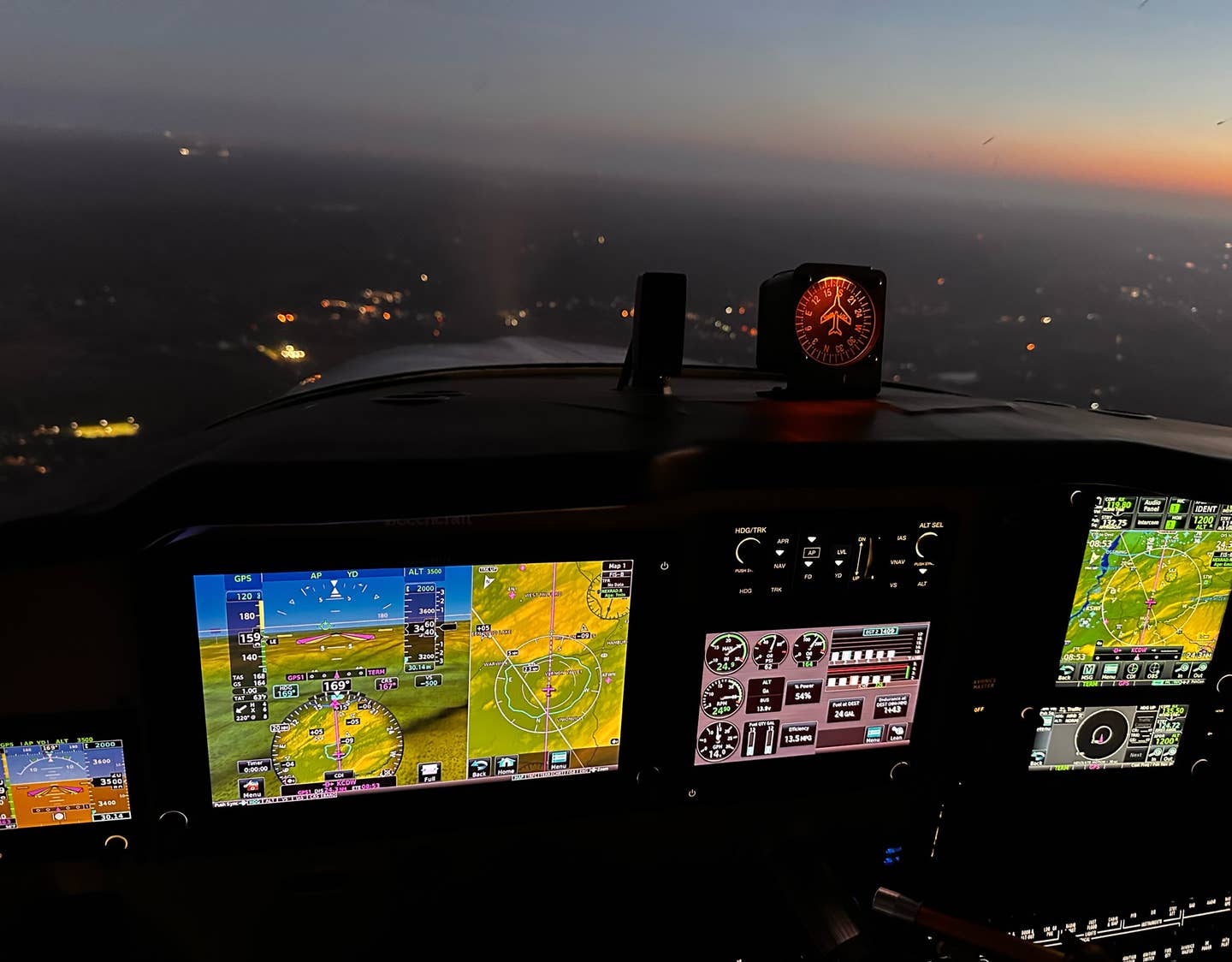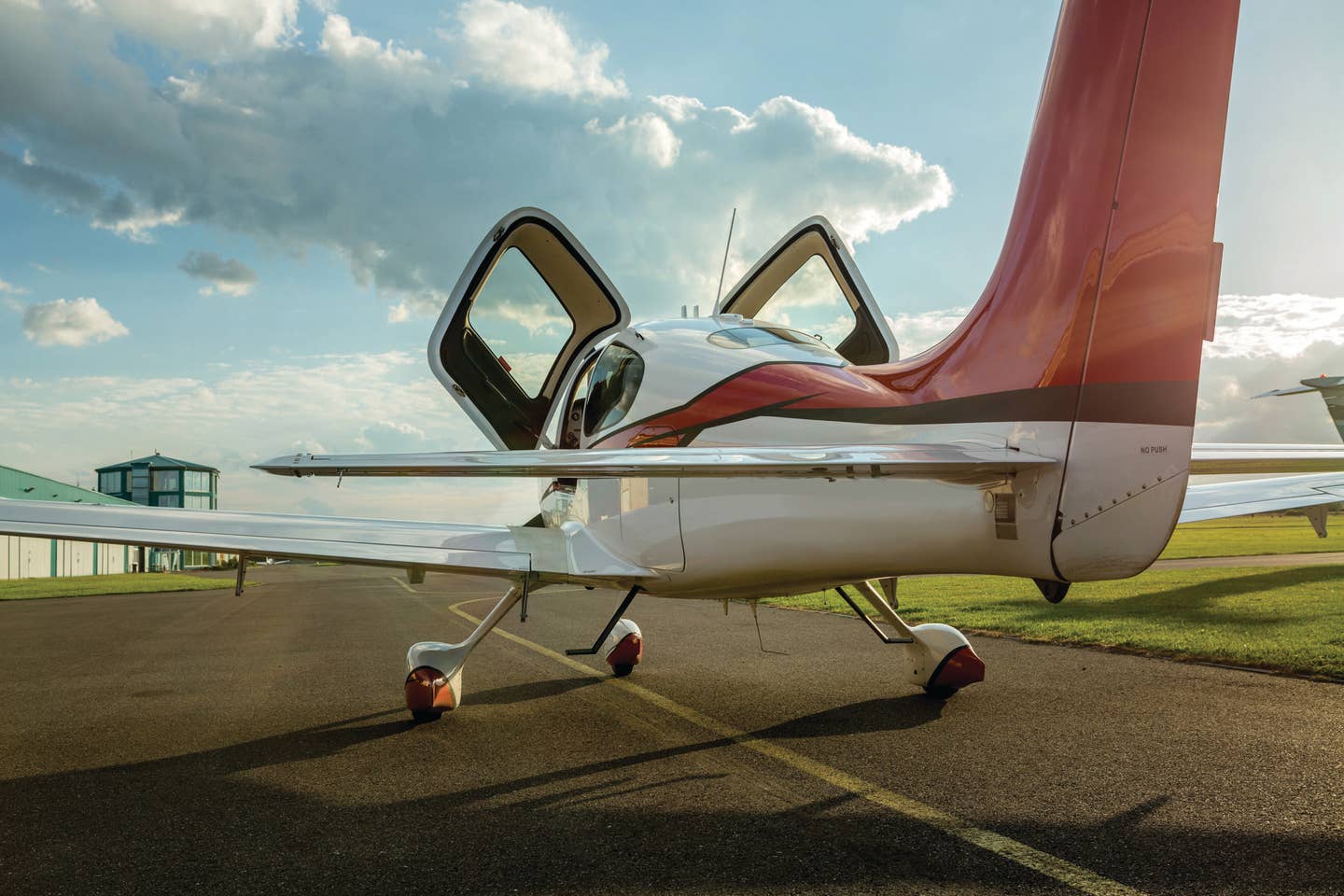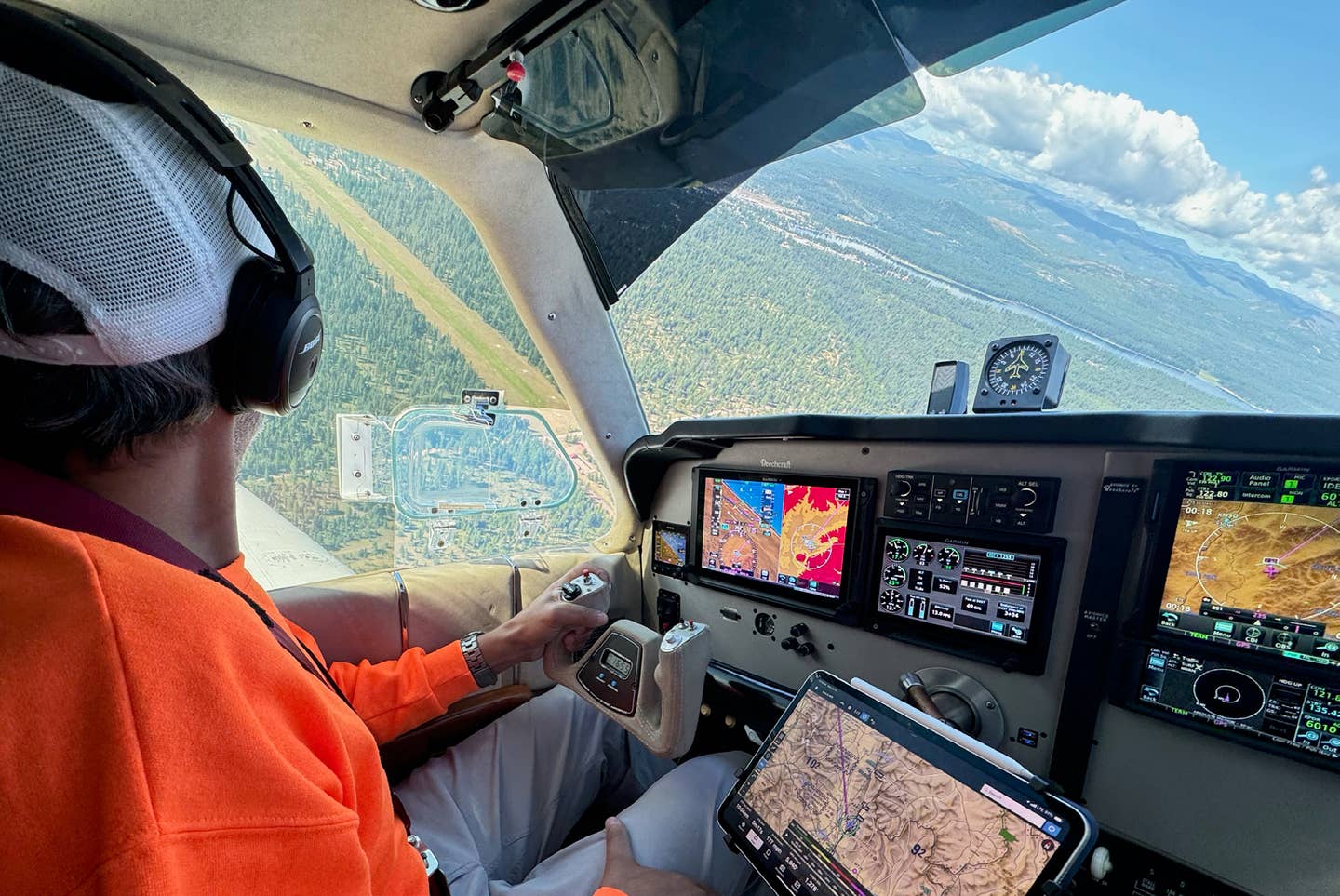Conversations in Dispatch Can Get Tricky
That voice-of-God vibe air traffic controllers have makes a pilot forget they’re allowed to push back.
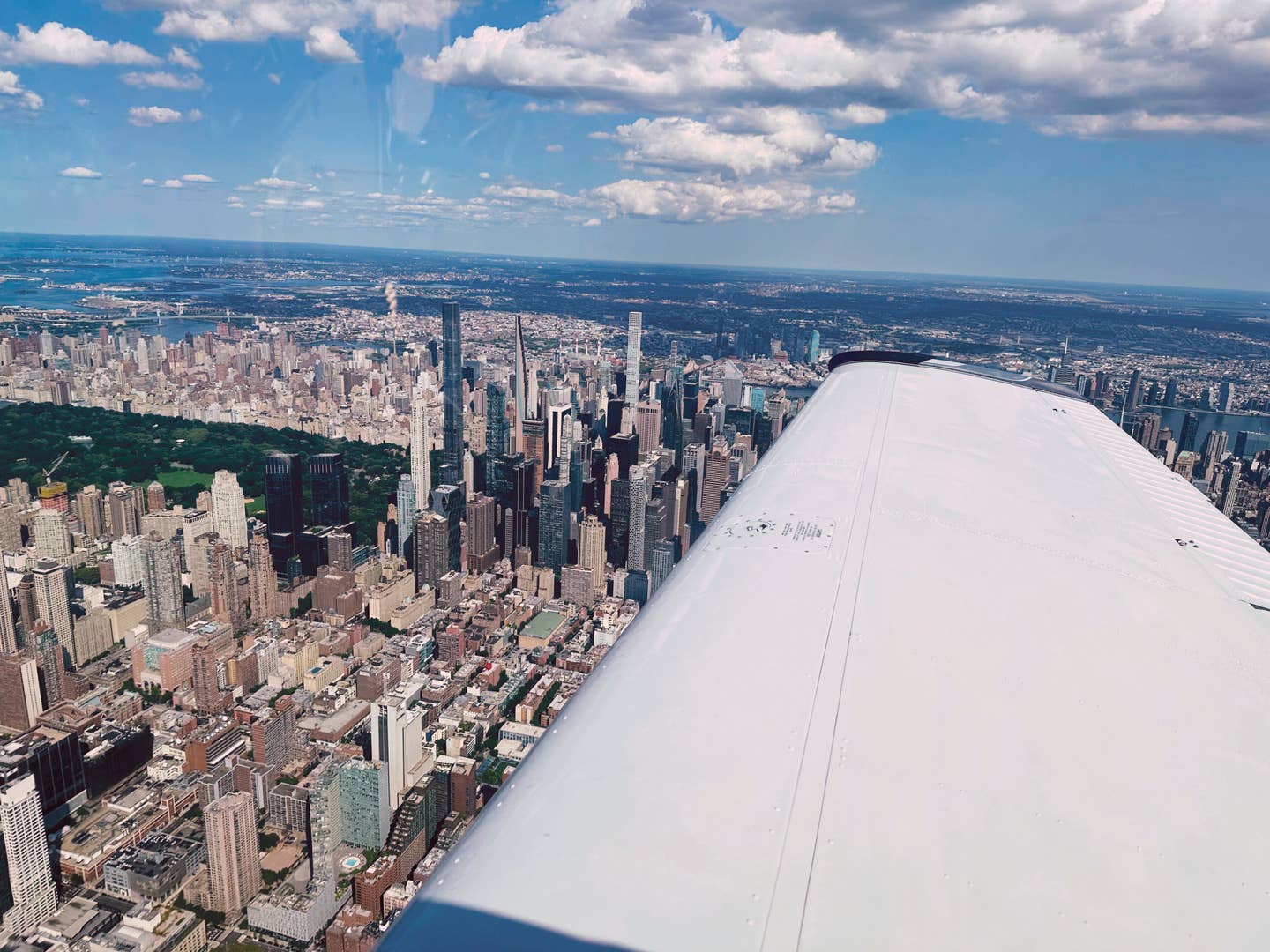
FLYING contributor Ben Younger says ATC has asked him to do things on short final before, and it’s normally a nonevent. [Courtesy: Ben Younger]
Newark Tower came on the radio, and the voice sounded urgent: “Bonanza Five Zero Whiskey, go around. Go around.”
It’s not like I’ve never heard those words before. Things happen at busy airports, and the tower will sometimes throw something at you at the last second. But this was unusual in that I was on short final. No, short final is actually a misnomer in this case. I was over the numbers. Flaps down, gear down, throttle back to 15 inches, trim plus-9 and increasing. I was, quite literally, about to land. Things went a little sideways from there, but let’s back up a minute first.
If you're not already a subscriber, what are you waiting for? Subscribe today to get the issue as soon as it is released in either Print or Digital formats.
Subscribe NowI was flying a friend to Newark Liberty International Airport (KEWR) so she could catch a commercial flight home. I worked it out so that we’d land before 3 p.m. in New Jersey, avoiding the afternoon rush (and the increased landing fees the Port Authority charges). I filed IFR even though it was clear and a million. Always best to do so when flying into Class B airspace. Many pilots get nervous about flying IFR into busy airspace, but the reality is that it’s far easier than VFR. You’re told what to do and when to do it. It’s actually a great help in regard to workload mitigation. You can’t bust airspace when you’re IFR as they take all the decision-making out of your hands. Well, not all the decision-making. And that’s where my problem was.
It’s a short flight from Sullivan County International Airport (KMSV) in Monticello, New York, to KEWR, and before we even settled into cruise, we were being vectored around for a visual to Runway 11. Approach sent me over to Tower and immediately they asked me to keep my speed up then cleared me to land. I have been in this situation before and, wanting to help out, I do my best to comply. Flying into Newark in a single-engine piston makes you the redheaded stepchild. No way around that. So you do what you can to fit into the fast-moving environment. I maintained 160 kias for as long as I could then had to slow down to get configured for a stable approach. As it was, I did this on the later side. On a 5-mile final, I pitched up and pulled power to get below the 150 kias landing gear actuation speed. We quickly decelerated. The airplane stabilized in no time as I flew my Bo “by the numbers.” In this case, a descent, which means 18 inches manifold pressure and plus-3 on the trim. This setting will always give me a 500 fpm descent with the gear down.
I had heard nothing from the tower since being cleared to land, though I was aware there was a jet behind me. Being just a half mile from the runway, I dumped all the flaps at once and trimmed up to plus-9 to maintain my stabilized approach. Over the numbers I pulled power to idle and was trimming up to plus-12 when Tower told me to go around.
I have been asked to do things on short final before and it’s normally a nonevent. Flying into Van Nuys, California (KVNY), this past spring, I was told to change from 16R to 16L about a mile from the threshold. No problem. Bank left, continue descent, squeak the landing, impress your friends. Like most of us, I’ve also been told to go around more than once. No biggie. But this was different. I looked at my ForeFlight log, and it showed I got as low as 61 feet msl. That’s 44 feet agl at KEWR. This is where that decision-making I mentioned earlier comes into play. I should have simply said, “Unable.” There was no hazard in front of me. I was cleared to land. It was my runway, and I was committed at that point.
I knew full well what was happening: The controller got the spacing wrong and did not want to make the jet behind me go around as he knew I might not exit the runway in time.
- READ MORE: Misses, Near and Far…
It’s that voice-of-God vibe the controllers have. Sometimes you forget you’re allowed to push back. I did what I was told. And this is where it got a bit rough. My aircraft does not have approach flaps. Practically, what this means for me is that I don’t extend flaps on an instrument approach until I know I have the runway made. Why? Because this is the most dangerous, busiest envelope of flight that exists for a GA piston pilot. You’re close to the ground, and the airplane is about to go through some serious aerodynamic changes because of what you’re about to do. It’s a far simpler affair in a Pilatus or TBM. They have as little as one lever. I have three. For this reason, I don’t use flaps until it’s a sure thing since it means there’s one less thing for me to do when transitioning to a missed approach.
So…I acknowledged the go-around while I pulled back on the yoke to stop the descent. I added mixture, prop, and then throttle in quick succession. I retracted the flaps next. She moved around a little bit, but I kept things together and, as the airplane started to climb, I pulled the gear up. Not too bad, I thought. More than usual but not too bad. Except I had forgotten one important item—trim. At plus-12 with a clean airframe and full power, she suddenly shot straight up into the air.
It wasn’t close. No stall warning, but it got my full attention. I pressed forward on the yoke—hard. Forced the nose down as I spun the trim wheel forward with my right hand (not a time for the electric hat) until I felt the pressure subside and entered a normal climb. For a newer pilot, this is exactly how you enter a stall/spin condition.
Tower then sheepishly asked if I could make a short approach. Affirmative. Pulled back throttle to 18 inches and dumped the gear again. Flaps as well. Dove back toward the runway and squeaked the landing. The controller thanked me. No problem.
This column first appeared in the November 2023/Issue 943 of FLYING’s print edition.

Sign-up for newsletters & special offers!
Get the latest FLYING stories & special offers delivered directly to your inbox


